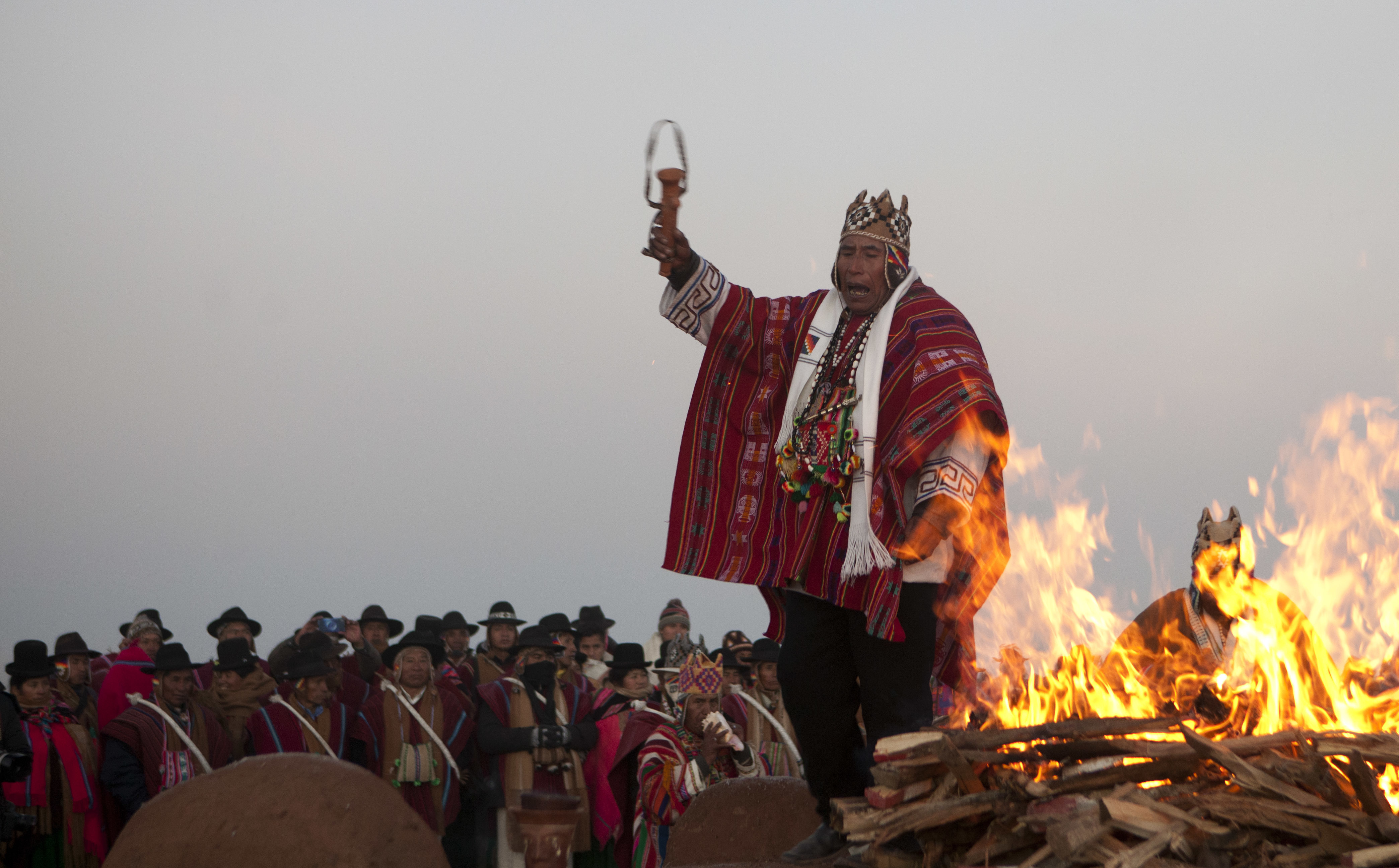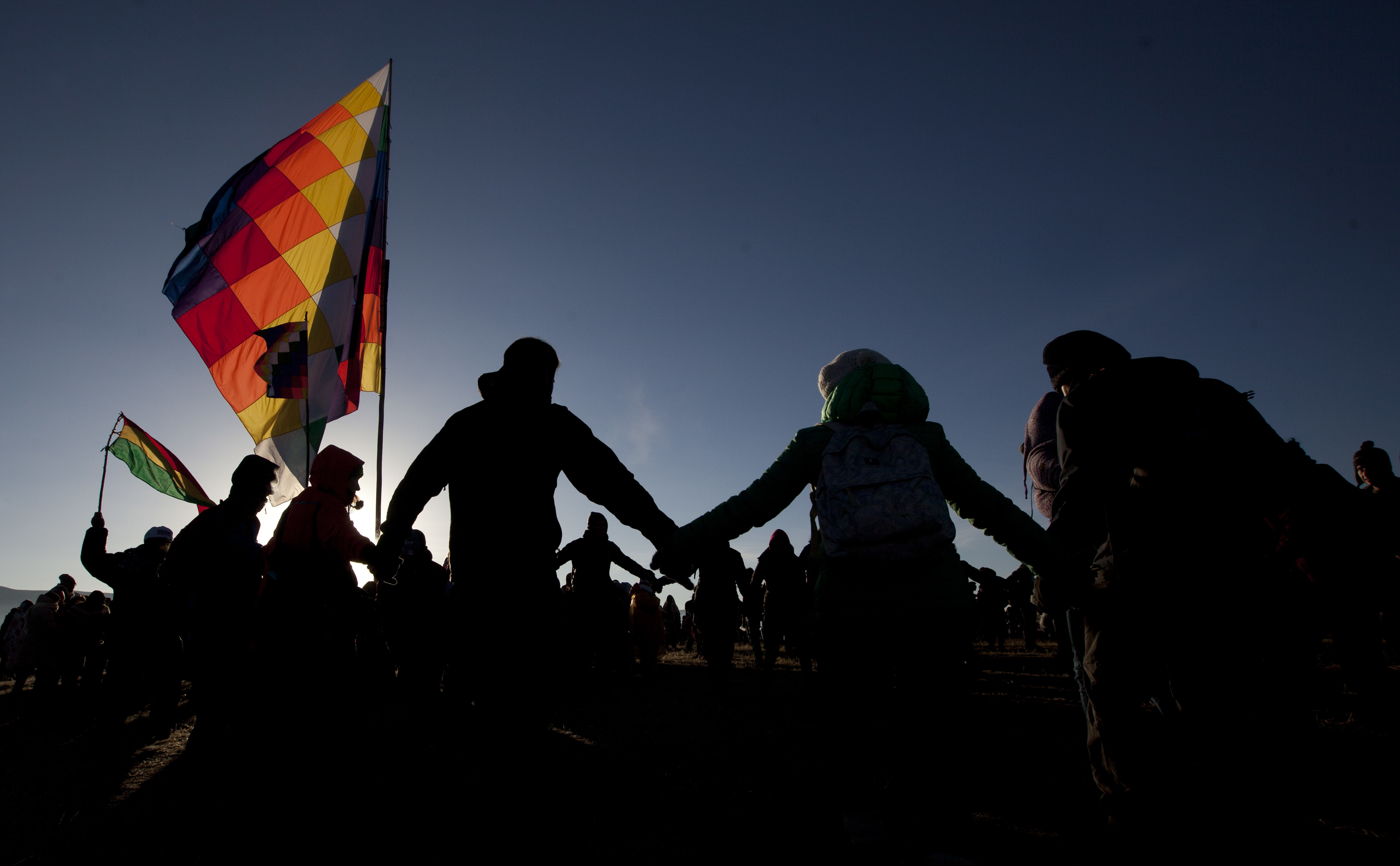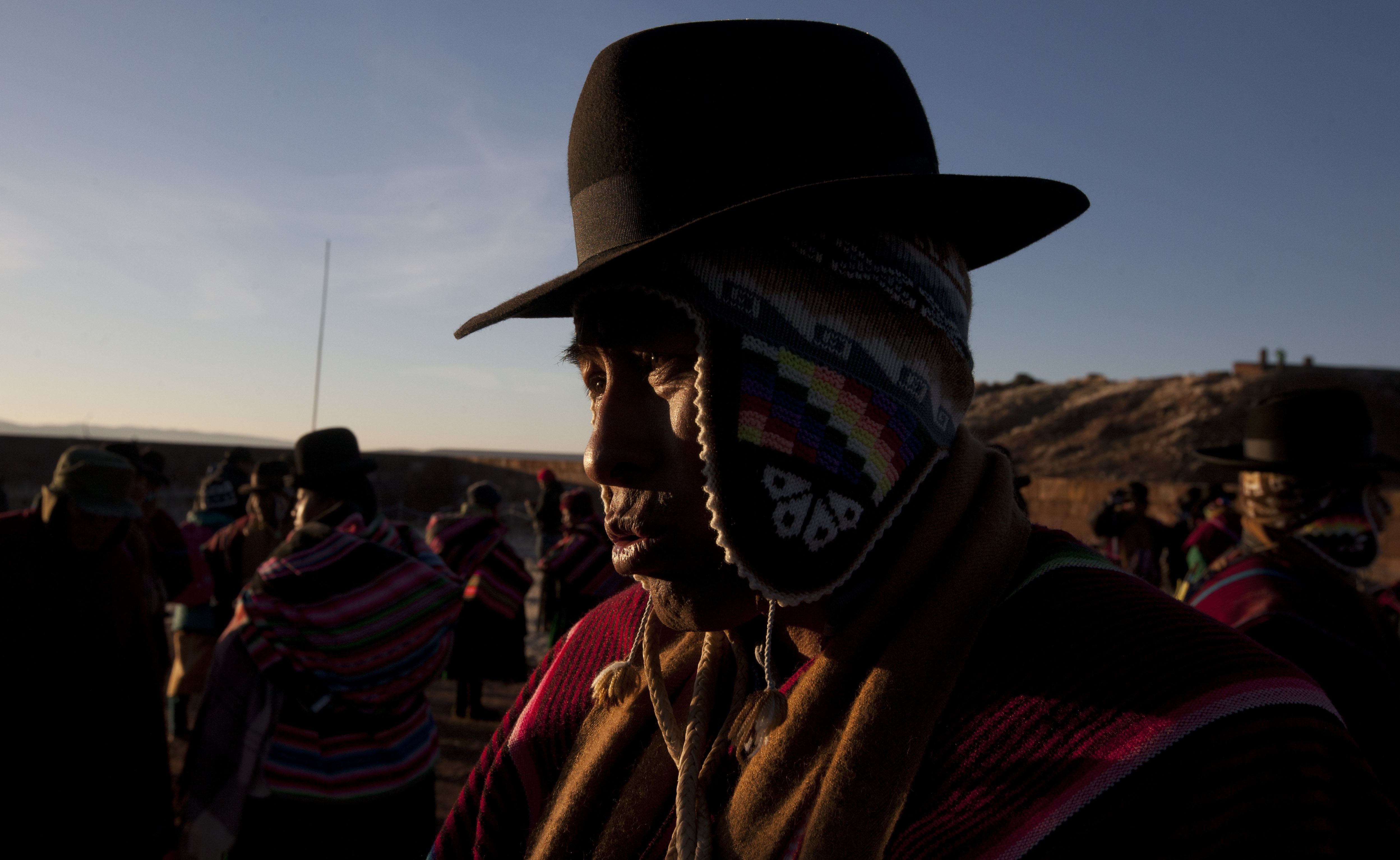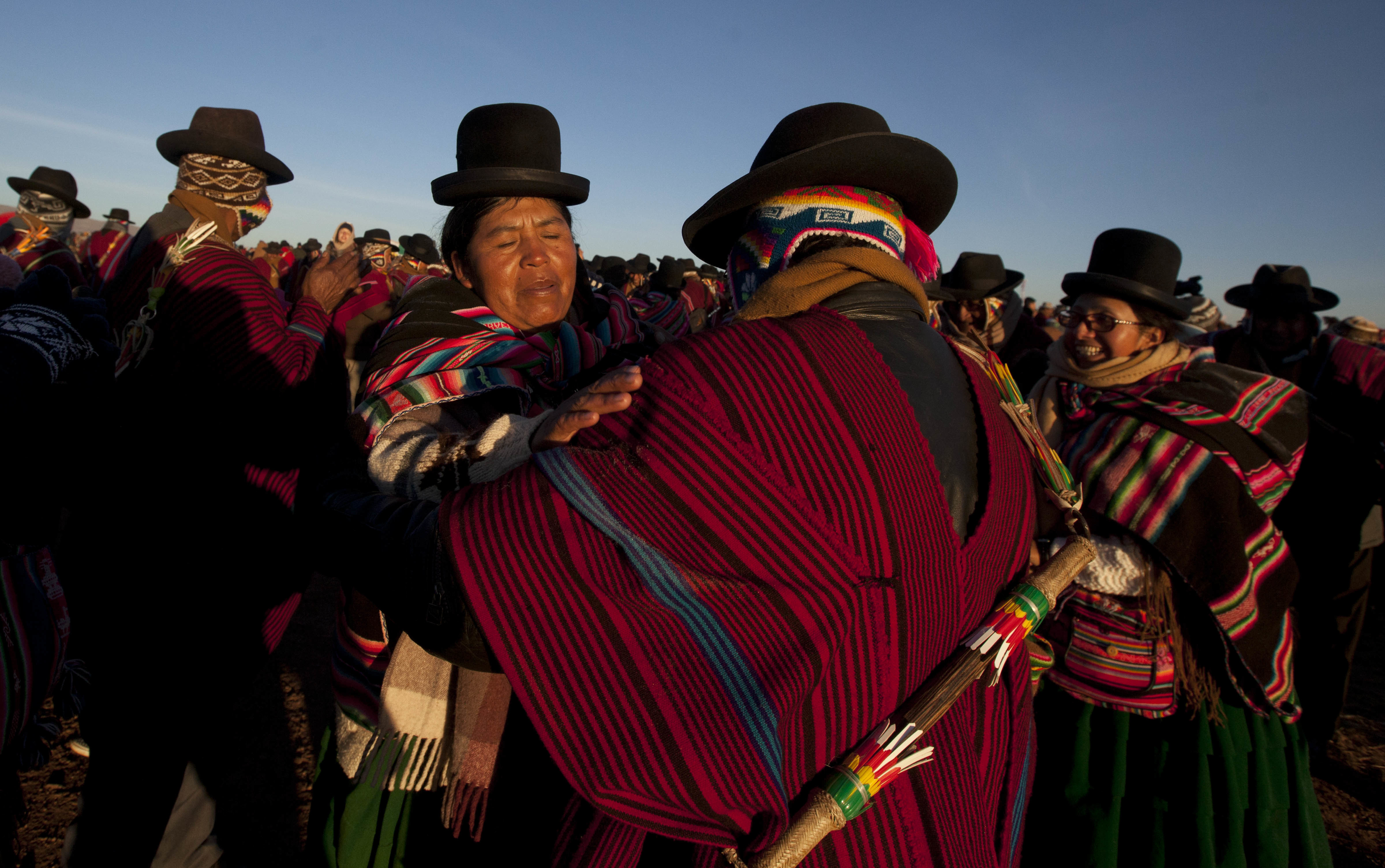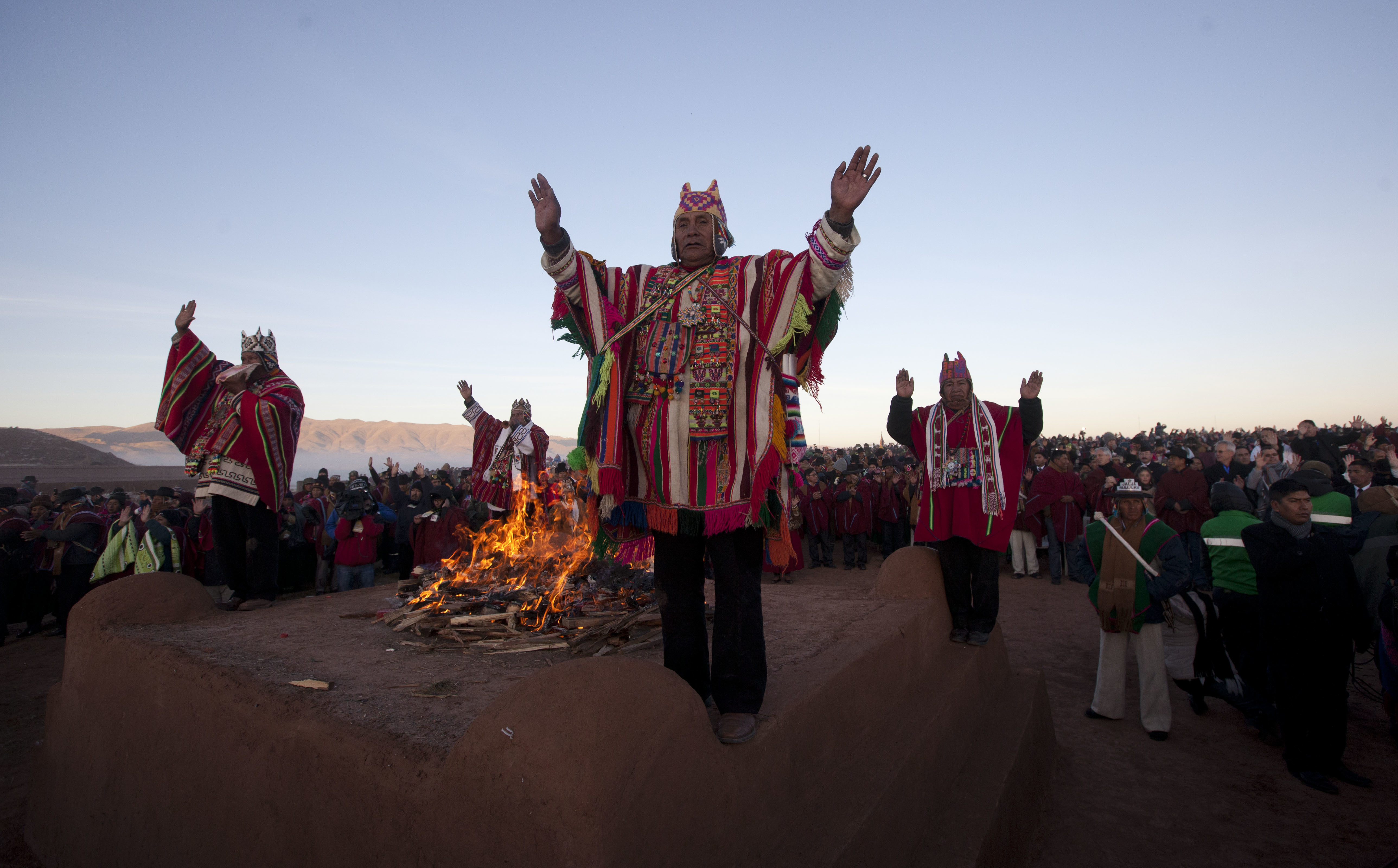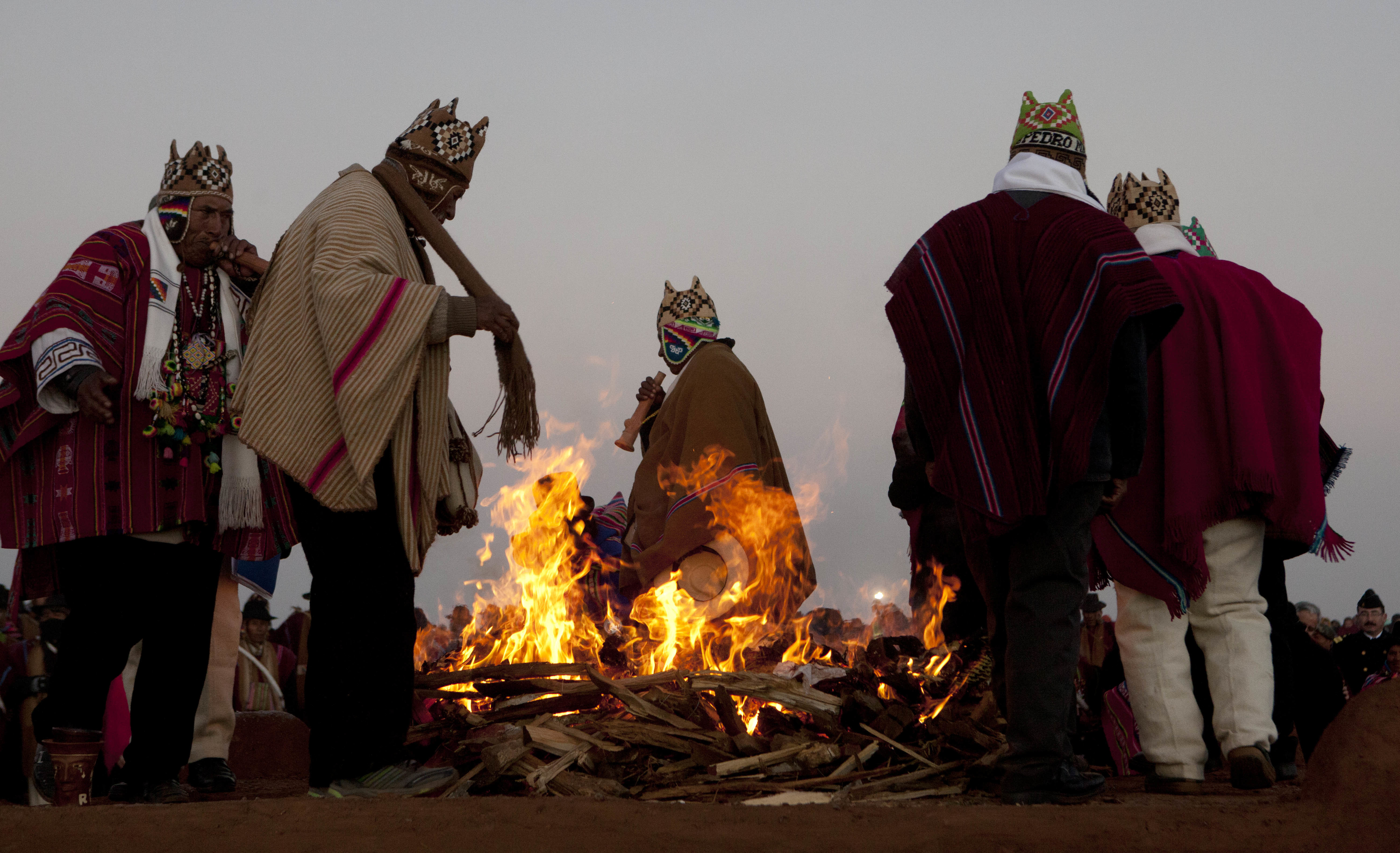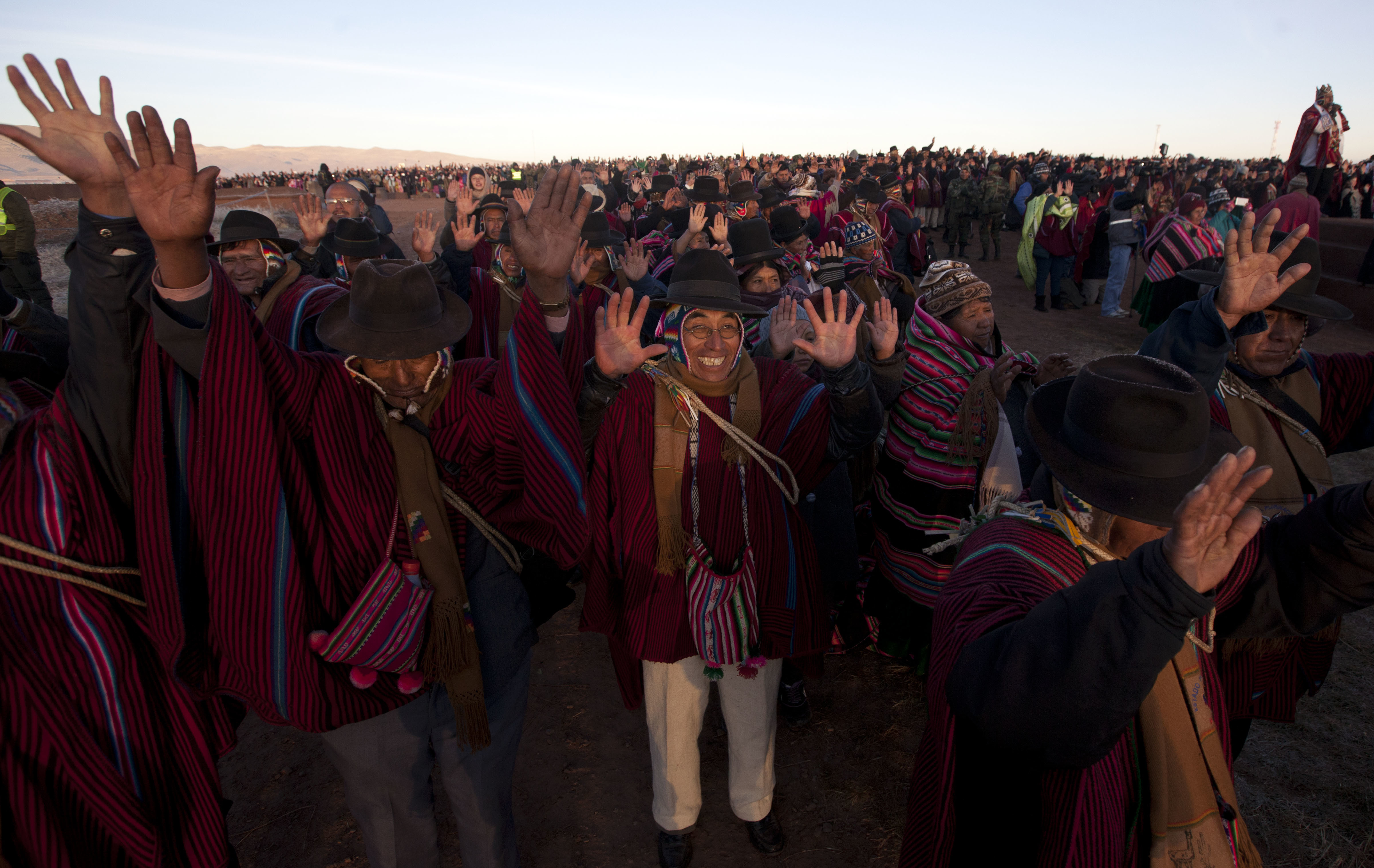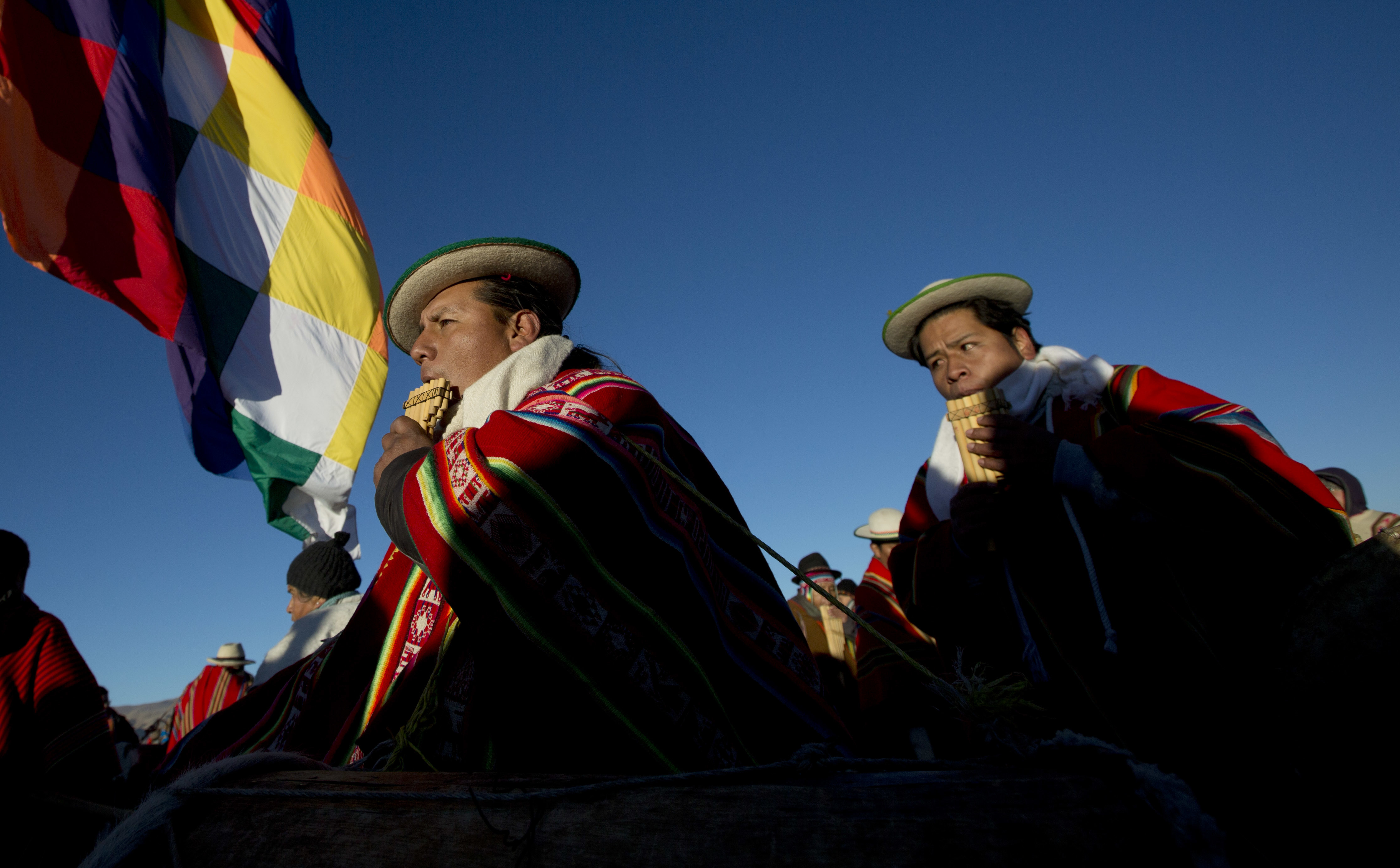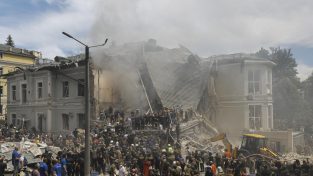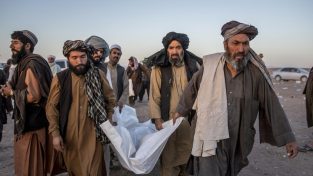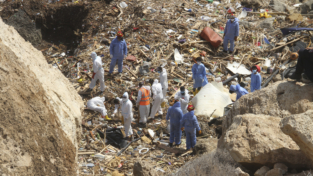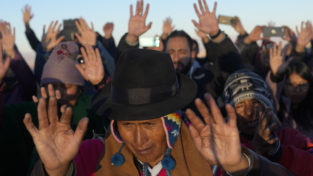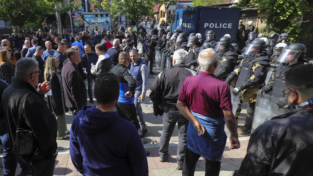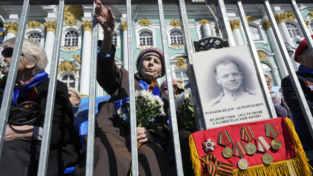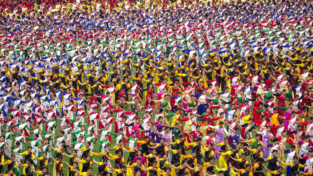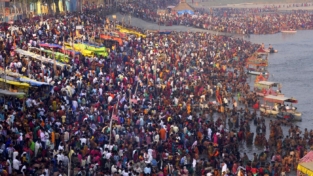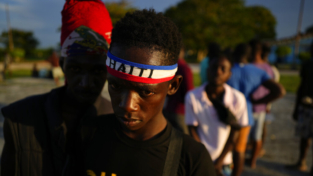Capodanno andino
Gli Aymara della Bolivia hanno festeggiato ieri – 21 giugno, solstizio d’estate per noi e d’inverno nell’emisfero australe dove loro si trovano – l’inizio dell’anno nuovo. All’alba – primo pomeriggio in Italia – si sono ritrovati sulle rovine dell’antica città di Tiwanaku, per accogliere insieme l’arrivo dell’anno 5.525 – secondo il conteggio usato dagli Aymara. I sacerdoti hanno guidato le cerimonie, in una festa che è culminata con una serie di abbracci collettivi all’arrivo dei primi raggi sole. Per chi vive nell’emisfero Sud si tratta del giorno più corto dell’anno: le giornate che tornano ad allungarsi a partire da quella data simboleggiano così l’inizio di una nuova vita, oltre che segnare il momento di partenza del nuovo ciclo agricolo.
